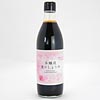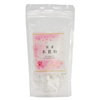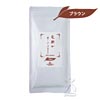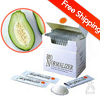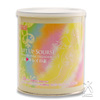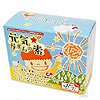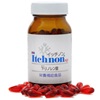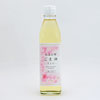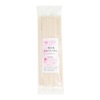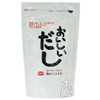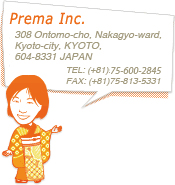
[40%OFF]Ginger Powder for Drink or Cooking "Ultra Kintoki Ginger"(60gx5bags)
| Item Number: | 00300028 |
|---|---|
| Price: | 3,500 YEN ≒ 24.54 USD |
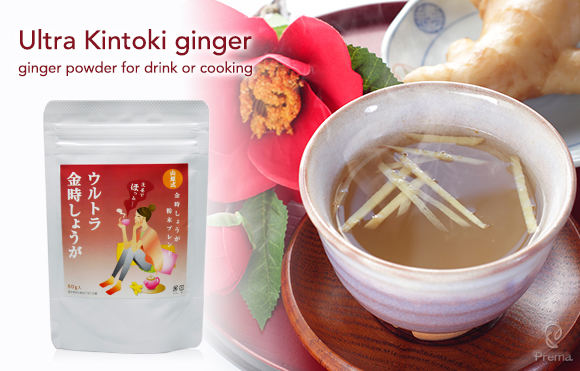
Kintoki ginger has specific spicy taste on its characteristic. We recommend you to take it at cold winter time. Summer time is also good as the body might become cold by taking cold drinks.
This is the ginger powder using high quality Kintoki ginger cultivated in middle part of Viet Nam, where is without soil pollution and the suitable place to grow Kintoki ginger. It contains rich in specific ginger components, "Gingerol" and "Galanolactone".
This warms your body from inside and supports to build up healthy body.
- Ingredients: processed brown sugar, Kintoki ginger powder, oligosaccharide, yuzu (Japanese citron) flavour, citric acid
- Size: 60g
- Expiry date: Valid for One and a half years from the manufacturing date if the unopened.
- Storage condition: Keep at room temperature, away from direct sunlight.
- Attention: Keep with well-closed after opening. Consume as short as possible after opening.
| Energy | 7.5 kcal |
|---|---|
| Protain | 0.07g |
| Fat | 0.01g |
| Carbohydrate | 1.8g |
| Natrium | 0.3g |
*As Ultra Kintoki ginger is very hot and has strong stimulation, please adjust the amount of use little by little.
What is Kintoki ginger…?
Types of ginger
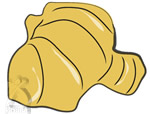
- About 1300 species all over the world
- Zingiberales, Zingiberaceae, Zingiber
- The origin is from Southern East Asia with warm and humid weather.
- In Japan, it is written as the name of Hajikami in the dictionary of Heian era “Wamyousyou”. It has been used regularly as health food since Edo era.
- In China, it has been used habitually as medicine and food since ancient times. You can find this written in the oldest book “Shinnou Honsougyou”.
- It is studied the usage as medicine even in Western countries.
- This is the same family with turmeric and myoga (Japanese ginger)
- In Japan, we do not classify the variety of ginger by the climate, but we make big variety classification by its size.
| Big size of ginger | Middle size of ginger | Small size of ginger |
|---|---|---|
 |  |  |
| Otafuku ginger, Omi ginger, etc. Mainly used for pickles and sweets. | yellow ginger, tsuchi ginger, etc. Mainly used for Ha-shoga (ginger with leaves) and pickles. | Taninaka ginger. Mainly used for Ha-shoga (ginger with leaves) and pickles. |
| weaker | stronger | |
| crop well | lean |
Components of ginger and its comparison
| Pungent Component | Essential oil component |
|---|---|
|
|
Comparison of contained component amount in each ginger by Dr. Johji Yamahara
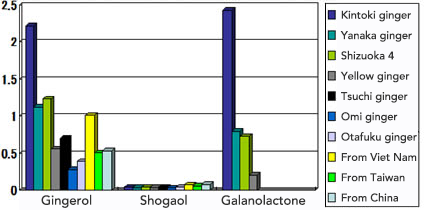
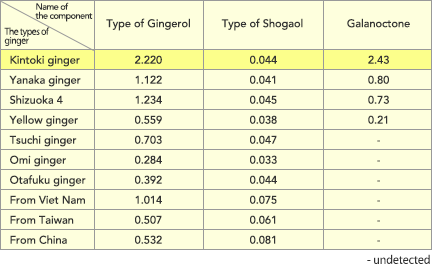
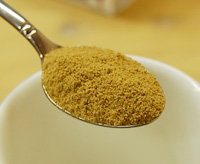
Kintoki ginger has rich in "Gingerol". Ultra Kintoki ginger is the product which is dried Kintoki ginger and makes it into powder so as easily to add into cooking and drinks.
The characteristics of Kintoki ginger
The origin of the word “Kintoki”
Kintoki bean, Kintoki carrot, Naruto Kintoki sweet potato, etc., we call reddish things “Kintoki”. According to one estimate, it has come to be used with the origin that the skin of “Kintoki Sakata” was ruddy face. His child name is Kintarou, who is an iconic figure of Japanese famous folk story.
- The contained amount of each component is more than normal and it has strong spicy taste.
- Rich in flavour
- It is cumbersome and difficult to take rid of the sand and soil as the ginger is small.
- The production farmers have decreased compared with the past, and it is rare to see in the market.
Below is the comparison of the main specific characteristics between hot pepper and Kintoki ginger.
Hot pepper

- Strong spicy taste and stimulation
- Perspiration function (Body is getting chilled after perspiration.)
- Stimulation to stomach mucosa
Kintoki ginger

- Strong spicy taste but low stimulation
- Weak perspiration function
- Protecting stomach mucosa
Production outline of "Kintoki ginger"
- Ginger is a plant growing under warm place. The origin is tropical Asia such as India.
- In Japan, ginger is very expensive as the cultivation costs high and duration of sunshine is not enough for growing.
- This Kintoki ginger is cultivated in Viet Nam where is easy to grow, under the complete leadership of cultivation method and administration.
Cultivation
- Obtaining the seed of Kintoki ginger from Japanese production area such as Wakayama prefecture, Aichi prefecture and so on. After that examining the contained component and doing classification, and then sending them to Viet Nam by air.
- Cultivating and cropping in each place in the middle part of Viet Nam, where is free from soil pollution by the project of Viet Nam government.
This is planted from late April to the beginning of May. To increase the inclusion component, it is needed ten to eleven months till the harvest.
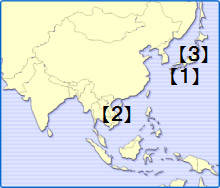
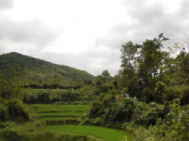
Harvest
- Harvesting after ten to eleven months from the planting. Each famer has about two tons of cropping for planting area of 1000 square meters.
- After the harvest, it is examined the contained component at IMM. Only the crops which clear the average level can go to the primary dry process. (When 500t of raw ginger get dried, it becomes about 40t.)
- The primary dried ginger is sending to Japan by air.

From cultivation till sending to Japan
- Cultivation (growing season ? period of influx)
June ? August
growing period: Quality checking of ginger seed.
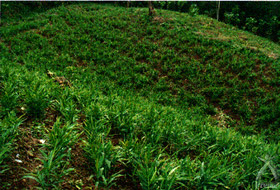
October ? November
Period of influx of the ginger rhizome.
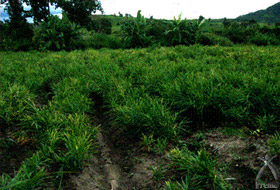
digging up some ginger and conducting analysis for contained components.
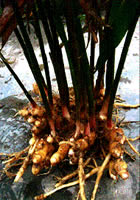
- Cultivation (aging period)
December ? January
Aging period: Leaving period to increase the contained components level. In this time, you can find the roots when taking rid of the part of the tops.
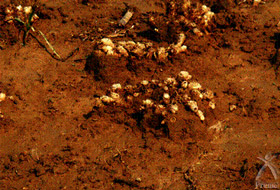
* Quality checking of raw material. - Harvest
January ? February
Period of harvest: after examining the contained components, starting to dig up.
Digging work
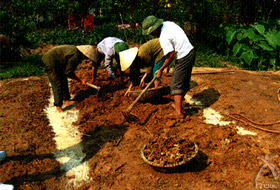
Washing by water
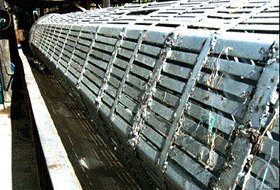
Gathering them to the factory and taking rid of the skin
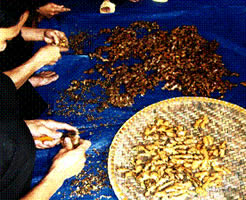
- Dry
January ? February
Period of harvest: Drying work to prepare the shipment to Japan.
Drying under sunlight
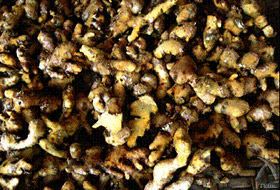
Drying by hot air
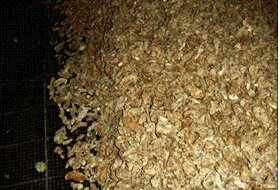
Removing a foreign object
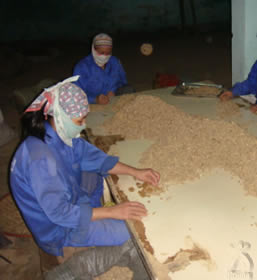
- Checking the quality and shipment
January ? February
Period of harvest: shipment to Japan
Quality checking for advance shipment
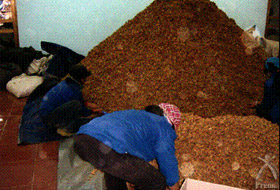
After the shipment to Japan, quality check is conducted before processing. Moreover, it is processed to powder, and conducting quality check of the products.
Processing and quality control of "Kintoki ginger"
Grinding, sterilization, processing
We process Kintoki ginger which has dried primary at the partner factory in Toyama prefecture.
- To add heat and dry every order of the ingredient. Processing into powder maximum 500 kg per a unit of lot.
- Under the leadership of MD. Yamahara, measuring contained component every processing unit of lot.
- Excluding the material with low contained component, averaging the contained component every unit lot based on the table below.
- Shipment after final checking.
Quality control
Keeping stable high quality and processing each necessary quantity.
Naturally grown ginger has different amount of active element in every lot unit. Therefore, we measure and adjust the amount of each contained component when we make dry powder process, and then we process to the final product and make shipment every order.
Trusted proven
About ten years has passed from patent application, and about five years since its release: security and trusted performance.
| Gingerol | Shogaol | Galanoctone |
|---|---|---|
| the average level of Gingerol Yamahara Kintoki ginger: above 1.0 Japanese Pharmacopoeia: 0.1 | the average level of Shogaol Yamahara Kintoki ginger: above 0.1 Japanese Pharmacopoeia: 0.1 | the average level of Galanoctone Yamahara Kintoki ginger: + Japanese Pharmacopoeia: none |
Japanese Pharmacopoeia… Based on Pharmaceutical Law Article 41, it is the pharmaceutical code established to improve the medical condition and quality.
We make our effort very much not only for clearing the above quality criterion, but also for fulfilling the criterion of contained component during its cultivation period. For meeting those conditions, it needs to leave the ginger field for three years after cropping for fertilization.
The Usage of original Kintaro ginger
Kintoki ginger is fine powder. You can utilize it by adding to various drinks or dishes. Take it at least a tea spoonful per day as a guide.
How to take
 | Tea It is enough for a half of tea spoon (about 1g) per a cup of tea. Enjoy a little bit spicy taste of ginger tea. |
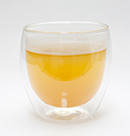 | Hot ginger Put a tea spoonful of Kintoki ginger to a cup and melt it with 100-150ml of hot water. Then add honey or sugar as your favor and stir it well to take it. |
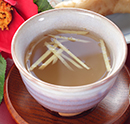 | The other way to drink with Add a nip of tea spoon of Kintoki ginger to Japanese tea and so on as your favor. |
 | Udon noodle, buckwheat noodle, or ramen Only to add a tea spoonful of it (about 2g), the taste stands out with its spicy taste and flavor. |
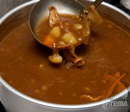 | Curry For serving two persons, add only a tea spoon (about 2g). The spicy taste increases and the taste gets richer. |
 | Fried food Spicy taste is necessary for Chinese or Korean flavor. The taste stands out only to add one spoon for serving one person. |
 | Simmered food For serving two persons, only to add a spoonful of this to boiled fish or simmered dish makes richer taste. |
*Do not heat more than ten minutes as the components are broken down, so it is good to add it just before the finish.
Study, development, and patented person
Profile of the Doctor of Medicine, Joji Yamahara
The motivation for study of Kintoki ginger.
Cinnamon, paeoniae radix, ginger, jujube, licorice, puerariae radix, ephedra are natural medicine constituting Kakkonto, which is used as medicine for cold. Among those, it is the ginger that has specifically superior effect for warming our body. When he has continued the research and study of ginger, he found Kintoki ginger, and then he has started the study. Now Kintoki ginger is rare and famous for its many attractive characteristics. He is the first person for the study of Kintoki ginger. His research literature is "Kintoki ginger", "the secret of Kintoki ginger" and so on.
| 1942 | Born in Osaka, Japan |
| 1696 | Complete the Medical study course of graduate collage at Osaka University |
| 1969 | An assistant professor of pharmacognosy at Kyoto Pharmaceutical University |
| 1991 | A director of study development at Drug Company |
| 1995 | Chief of Natural medicine resource study laboratory at foundation for Research Institute for Production Development |
| 1999 | President of Society for Salacinol |
| 2002 | Professor emeritus of Medical department at the University of Sydney |
| 2002 | A director of an incorporated non-profit organization of Natural Resource development |
Macrobiotic..
This is a regimen that incorporates such concepts as Zen, Feng-Shui, Yin Yang and Tao. These concepts unify the essence of Japans spirituality and outlook on the Universe.. The purpose of the Macrobiotic Asia website is to bring together products from Nature''s bounty as well as processed products and deliver them to the world in the Japanese spirit of harmony.
Japanese Kudzu Powder 100g
968 YEN





